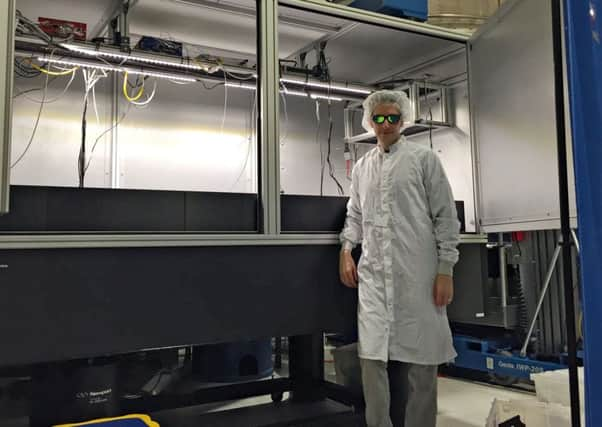Gravitational waves discovery is '˜just the beginning'


Alastair Heptonstall, 37, is a scientist at the California Institute of Technology (Caltech) and played a key role in upgrading gravitational wave detectors that paved the way for the breakthrough, developing silica fibres for the intricate device.
Advertisement
Hide AdAdvertisement
Hide AdMr Heptonstall completed his doctorate as a member of the Institute for Gravitational Research at Glasgow University. The team made key upgrades to giant detectors which enabled them to capture the 1.3 billion-year-old “thud” from one of the waves – which finally proves the universe can be “heard”.
Mr Heptonstall is now part of Caltech’s instrument science and engineering team, helping to build the advanced Laser Interferometer Gravitational-Wave Observatory (Ligo) detectors at their Louisiana and Washington State sites.
He said: “The most exciting part about this discovery is that it is just the beginning.
“The Ligo is only at the start of the current operations phase and has a lot of observing time to go.
Advertisement
Hide AdAdvertisement
Hide Ad“In the history of astronomy, every major breakthrough discovery such as this has been followed by many years exploiting the techniques to learn new things about our universe.
“Gravitational wave observations will undoubtedly continue to tell us new things about the universe we live in.”
The laser engineer, who is from the Greenbank area of the city, was educated at George Heriot’s School and completed a physics degree at Glasgow University before his postgraduate studies there. Gravitational waves are like ripples on a pond created by far-off cataclysmic events such as the collision of black holes. They spread across space, minutely distorting everything in their path.
The discovery announced yesterday could shed new light on mysteries such as dark matter and dark energy, and even the so-called “Big Bang” and the birth of the universe.
Advertisement
Hide AdAdvertisement
Hide AdThe waves, detected on September 14 last year, came from two black holes combining in an enormous collision that happened at a time when life was just forming on Earth.
Scientists believe it opens up huge new potential for further discoveries about the universe, and compared it to the achievements of 17th-century astronomer Galileo.
The detection of gravitational waves comes exactly a century after Albert Einstein predicted their existence in his General Theory of Relativity.
He received an honorary degree from Glasgow University in 1933, when he gave a lecture there.
Advertisement
Hide AdAdvertisement
Hide AdFrance Cordova, director of the US National Science Foundation, said: “Einstein would be beaming. This is a very, very special moment. We are seeing the universe with new eyes in an entirely new way.”
The discovery was made possible by Glasgow University’s work to improve the twin detectors in the United States, which are the most sensitive instruments every built.